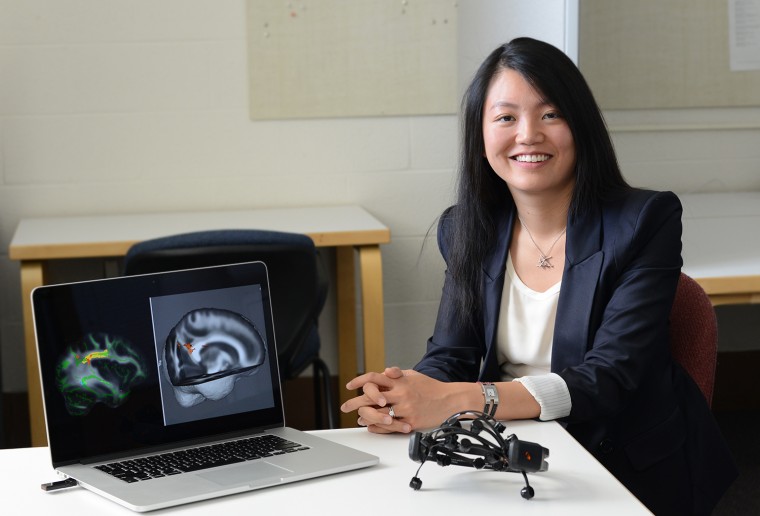Loui Studies How Brain Connectivity Reflects Aesthetic Responses to Music


Assistant Professor of Psychology Psyche Loui has long been interested in studying the intersection of music and emotions. In her latest study, published March 10 in Social, Cognitive, and Affective Neuroscience, she identified specific connections in the brain between the auditory processing regions and regions for social and emotional processing. The article is titled, “Brain connectivity reflects human aesthetic responses to music.”
Loui, who also is assistant professor of neuroscience and behavior, assistant professor of integrative sciences, has previously studied how music can cause chills, or similar strong physiological reactions in people when listening to music. Together with former thesis student Matt Sachs, she set out to study what was different in the brains of people who experience these music-induced chills compared to those who don’t.
The researchers started by conducting a large online survey with more than 230 participants. From this group, they selected 10 people who reported frequently experiencing chills from music and 10 people who reported not getting chills. They controlled for musical experience, gender and personality differences. Each participant was asked to bring in a few favorite pieces of music to the lab. Since individuals respond differently to music—that is, music that is chill-inducing varies from person to person—the researchers used music provided by one participant as control stimuli for another participant.
Participants were connected to physiological equipment measuring their heart rate, skin conductance (sweatiness) and brain activity. When the chill reporting group was played their favorite pieces of music, they showed an increase in heart rate and skin conductance. These physiological changes were not seen when a control piece of music was played. Importantly, the MRI showed increased connectivity between auditory regions of the brain (called the superior temporal gyrus) and regions that are important for emotional and social processing (within the frontal lobe, regions known as the anterior insula and medial prefrontal cortex). In the group of participants who did not report experiencing chills from music, the same brain pathways were observed, but the volume of pathways was significantly smaller. These pathways have not been previously studied.
Loui says this finding is exciting because it gives hints as to why humans make music.
“It’s an auditory channel toward socially and emotionally relating to other people,” she said. “Perhaps good song writing requires finding that auditory channel that appeals to listeners’ social and emotional systems.”
Loui said this research inspires further questions, especially whether these brain pathways are specific to music, or if they are also seen in aesthetic reactions to other perceptual experiences, such as viewing a beautiful painting or hearing a poem.

